The Karun Thakar Fund has awarded a Project Grant to Anitha N., a community-based art practitioner, curator, and researcher based in Bangalore, Karnataka, in support of her project Mosaics of Cloth: Finding Meaning in Material. Here, Anitha introduces herself and her project working with Siddi women quilters to revitalise the craft and create distinctive works of textile art.
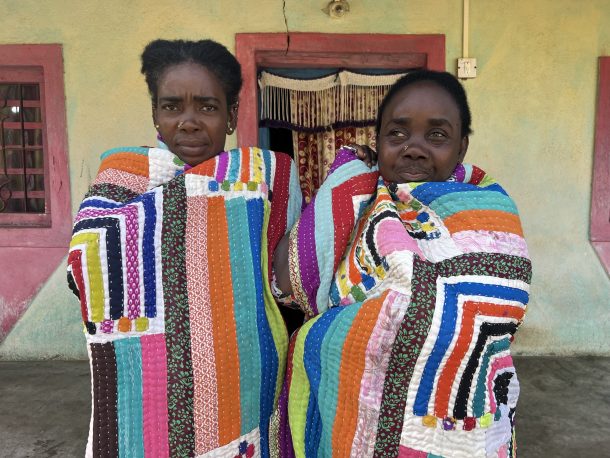
A little over a decade ago, I travelled through the verdant forests of the Western Ghats of Karnataka, towards a village called Analesara. I was a guest at a friend’s house, and as I wound down for the night, I was presented with a hand-stitched patchwork quilt, made by the women of the house especially for visiting guests. Analesara is one amongst numerous other villages in the region that are inhabited by the Siddis — Indians of African origin — and I came to understand that quilting was a craft being pursued by many Siddi women.
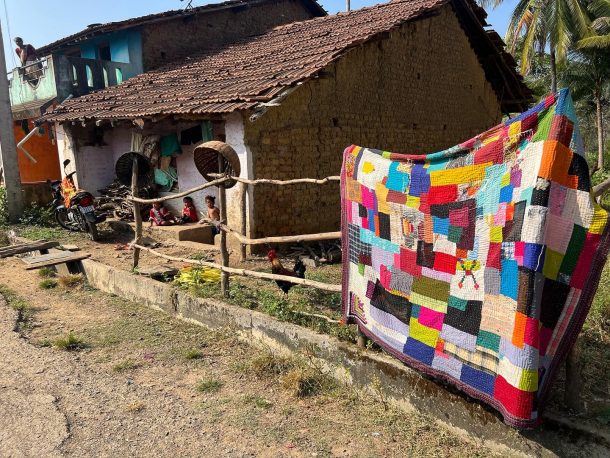
As an art historian and an art practitioner, I was drawn to these quilts and wanted to learn more about them. From this initial curiosity was born a dialogue with the quilters of one village, and then another and yet another, until I had come to understand this tradition a little better. Over the last seven years, I have worked with Siddi women, helping them sustain their quilting practices while also facilitating the traditional passing on of quilting knowledge and skills from one generation to another. Over this period, the quilters have been able to monetise their skills, and a sustained and continued engagement with the practice has allowed newer visual vocabularies to evolve and emerge.
By bringing their artistic labour to more mainstream markets, through exhibitions and sales, this art form is now seeing a revival. More women of the community have come to pick up quilting, and what was a ‘woman’s chore’ has now turned into a community art project of sorts, that has helped women support households with income, and explore their own agency as artists and makers.
Who are the Siddis?
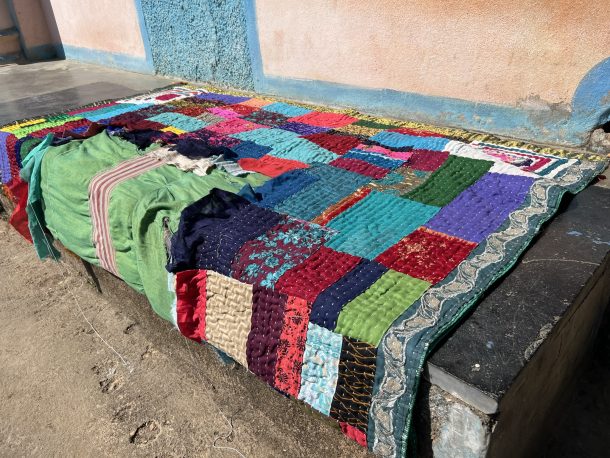
‘Siddi’ is an umbrella term used to refer to people of African descent across Karnataka, Gujarat and Maharashtra states of India, despite the fact that the Siddi communities across these regions do not share a common historical experience or point of origin within Africa. The Siddi in Karnataka have largely assimilated local cultures including religion, dress, food and language. Quilting, it seems, is one such tradition that has been learnt and borrowed from neighbouring communities in the region and has been subsumed into the Siddi way of life. As per women of the community, it is not something that their own ancestors brought with them from their native lands; rather, they learnt it from other women of different communities
Siddi villages in Karnataka are often situated in the midst of dense forests, connected to the main roads only via overgrown mud paths and sometimes cemented roads. Very often, villages or settlements are distant and isolated from each other, with patches of forests separating them. There is however, one thing that seems to connect many villages — the women stitch quilts called kavands, using flattened layers of old, worn clothes traditionally gathered from members of their own households.
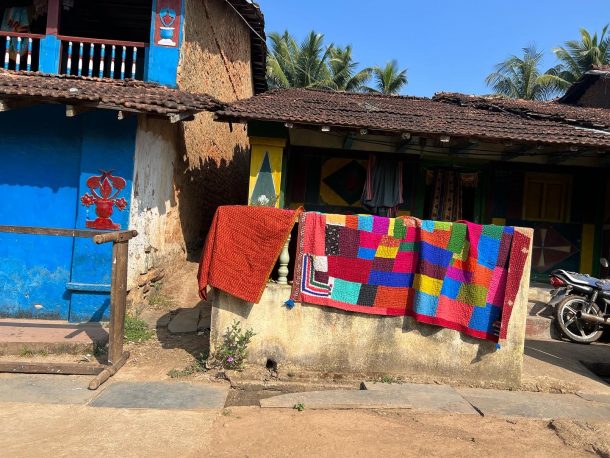
Nearly every Siddi household has at least one multi-coloured kavand, or aspires to own one, either quilted by the women of their own household or by other quilters in the community, as it holds some form of cultural and sentimental value. Large villages have a few women, usually in their forties, who function as the quilters for the community and are recognised as masters in their craft. They are also a repository of quilting knowledge, and their homes are spaces for other women of the village to gather and learn to quilt. Traditionally these master-quilters who quilt for other homes are paid for their craft in kind, with areca nut, grain or fruits and vegetables, but sometimes in cash.
Similar in functionality to kavand quilts used by other communities, the Siddi quilts are used as mattresses to sleep on during the summer and as a blanket in the monsoon and winter. Quilts range in size and design based on the number of people they can accommodate, as well as whom a quilt is made for. While a range of communities across Karnataka share numerous commonalities in their quilting practice, including the sourcing of material, technique and functionality, each quilt is unique and is a direct expression of the makers’ individual preference in terms of design, pattern, colour and texture
Finding Meaning in Material
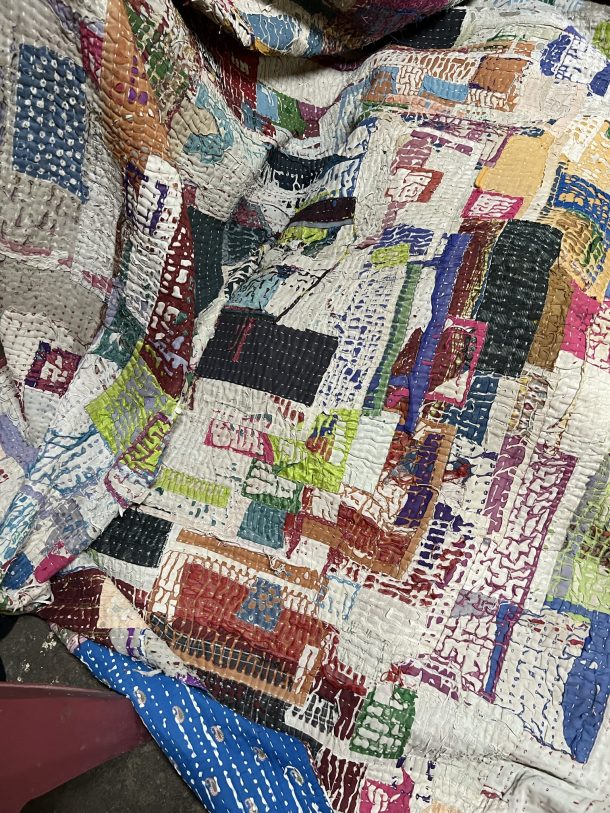
It is undeniable that among these villages a skill exists, and it is one that has been passed from one generation of women to another. Yet, this intergenerational knowledge transference was on the brink of disappearance. The reason for this was twofold – one, the quilts were mainly made for household use, and brought no economic returns, and two, being made up of multiple layers of sturdy clothing, they were utilitarian and built to last, there was no need for new quilts – these quilts were made to last a very long time, using materials available, and are typically mended and are used until they fall apart entirely. A third reason for the practice vanishing can be attributed to the increasing popularity of machine stitching, which made it quicker, cheaper and less labour and time intensive to stitch a quilt, and this process began to be outsourced to men and women from other communities.
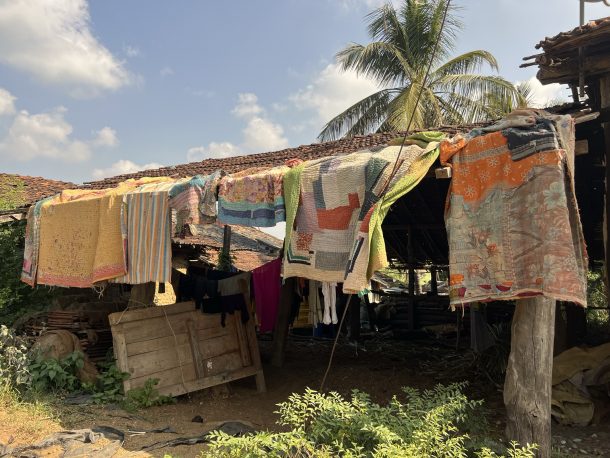
The multi-coloured, vividly patterned hand-stitched quilts, when I encountered them, seemed to me the artistic expression of every individual quilter – I saw these quilts as works of art as much as they serve a function in everyday living. At the same time, I saw how preserving and sustaining quilting practices could help empower the women — I could help them to sell these quilts and earn money, without them losing ownership of the craft. There was an opportunity to keep the craft alive, while bringing empowerment to the women, as artists, as makers, as earners and as teachers.
Every month, I would travel to the Siddi villages with bags of textile scraps and yardage that I had sourced for the quilters, and would encourage them to use these materials to stitch quilts. They continued to have free reign over the material they chose, the patterns they made, the colours they paired and the pace at which they quilted, and this is something that stands even today.
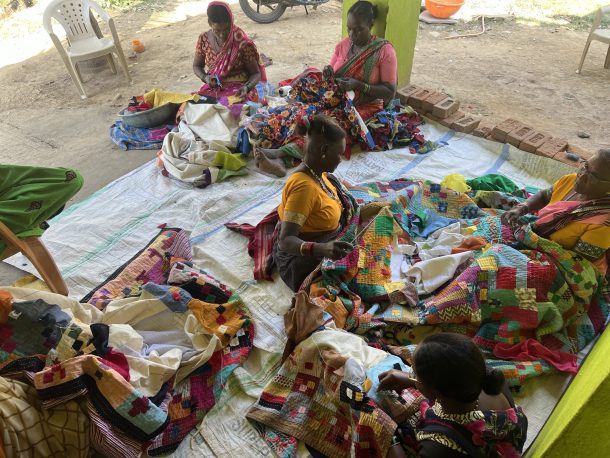
Slowly, with each subsequent visit, more women in these villages have begun to come together to quilt, and there has been a resurgence and re-discovery of the house, the courtyard, the veranda as a community space. These spaces are welcoming of women as they gather to quilt, examine textile material, decide on patterns, discuss colours, divide labour and simply work together. More women have made the time to learn quilting and, as a result, what was a slowly petering out tradition has found a revival among the Siddi villages of Northern Karnataka. Today, there is an active quilting community in five villages, and nearly every quilt that a woman makes bring an income to her.
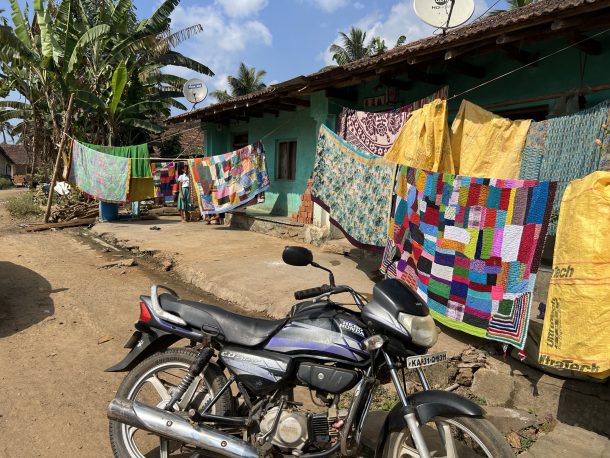
Gradually, these quilting sessions have allowed me to engage with the women and the women with one another, drawing out stories, talking about community and personal histories, attempting to trace how they first learnt to quilt, trying to use old quilts to trace stories and family lineages. The act of quilting has thus become an act of community art practice and has allowed for the formation of safe spaces for the women.
The support of Karun Thakar Fund will allow for a greater and deeper degree of engagement with these communities and allow for a formal documentation process to begin. As the Siddi quilters visibly transition from a traditional and domestic design vocabulary into a newer phase of exploration and image making, this project hopes to record and engage with this process.
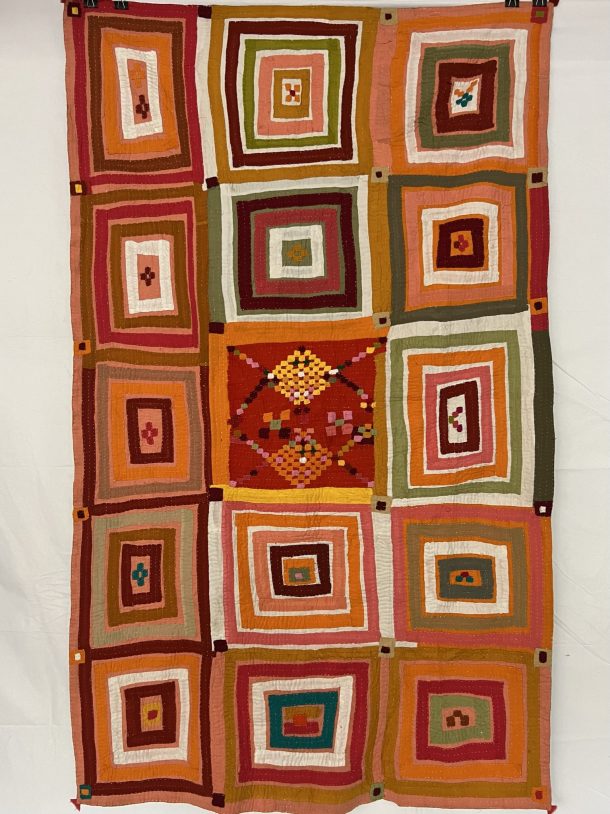
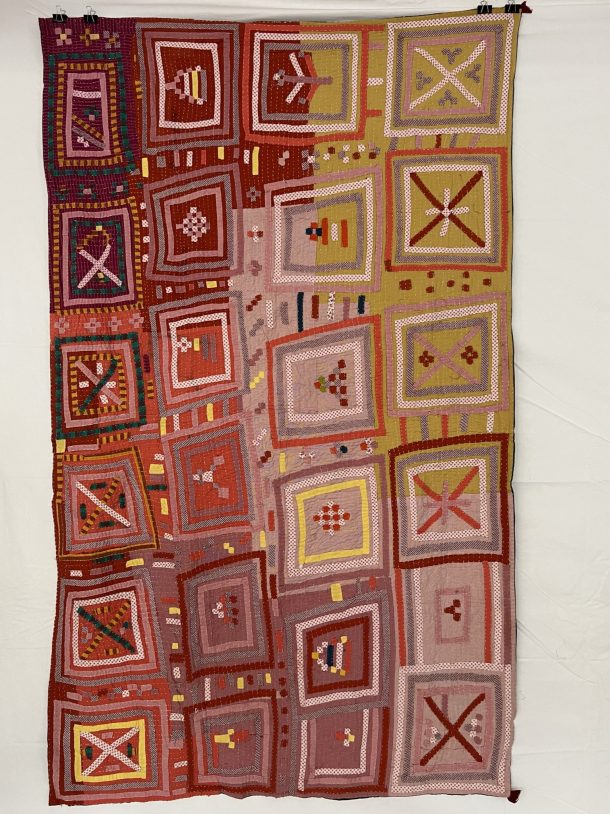
Using what has traditionally been viewed as a very domestic and feminine pastime, as they have expanded their practice the quilters have also come to identify themselves as artists, and the authors of a quilt. They have begun to examine the patterns they create on each quilt, the colours they prefer, the ways they might pair textures, colours and materials, and what these conscious decisions might mean, what they might express. There has been an active exchange of ideas, as each quilters visual style has begun to influence that of others and vice versa, creating an interconnected style of quilt-patterning.
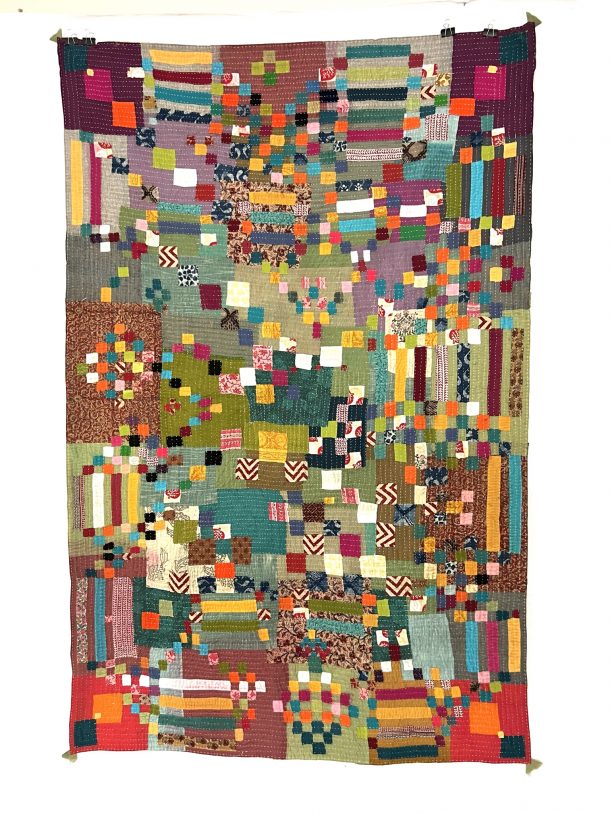
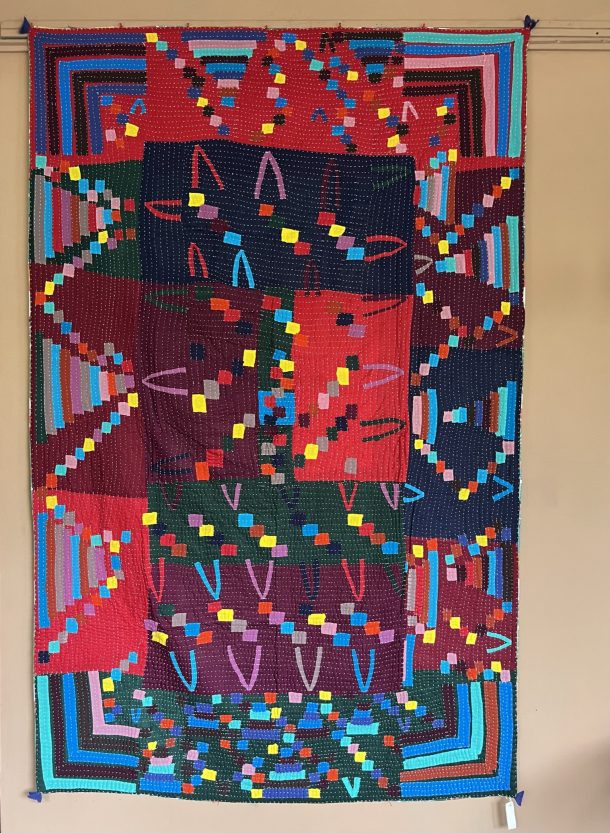
There are ongoing attempts to formally trace the lineages of pedagogy between generations of women in a community and across villages. The project will also attempt to create a repository of individual associations with colours, patterns and motifs and their connections to the community’s history, rituals. Further, the quilters themselves hope that their discussions will aid them to witness and engage in the discovery of a special, new, and ever evolving design vocabulary and identity for the community.
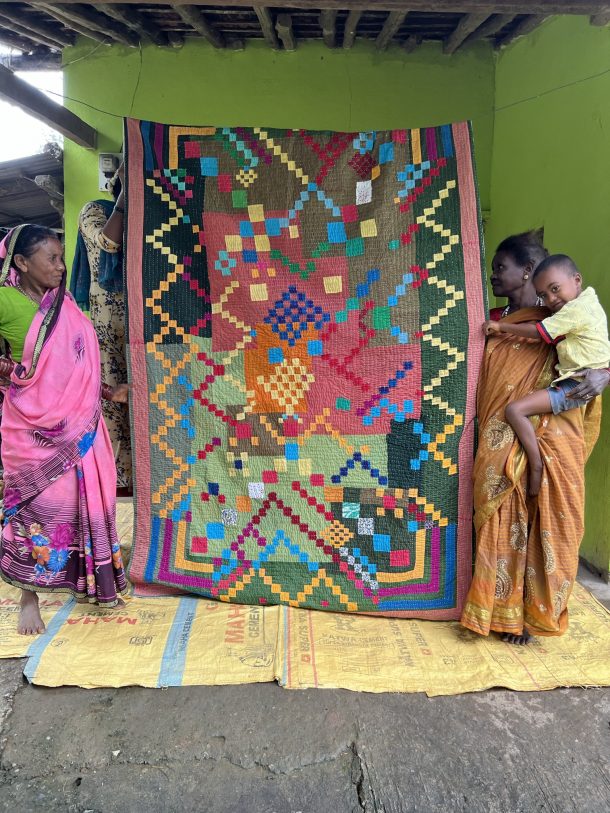
Find more and follow Anitha’s work with Siddi quilts on Instagram at @anithanreddy



I enjoyed reading this essay and I think it is great the women are finding ways to continue what I am sure would be a most satisfying activity. I also like to hear of the African diaspora you have alluded to here.
My heart has been pounding with joy after finding your posts. I have been quilting and sewing for about 50 years. I am always looking for inspiration and freedom in sewing quilting etc. I thank God for finding your posts and love for these woman. Thank you so much.
I read about these Siddi women quilters first by reading the article you wrote in Today’s Quilter magazine. I am a quilter living in London. In February I am going to be part of a volunteer group at the Plenti project in Tamil Nadu. The project was set up to provide support for the Adivasi villages in Tamil Nadu. When we were there just before the pandemic an Adivasi innovation hub was set up by some of the Adivasi to investigate business opportunities for some of their communities. Apparently one idea is sewing ‘story quilts’. I would love to know more about your work in Karnataka because it seems so relevant to the Adivasi quilt idea. I don’t know how I can help but I think you would be a wonderful resource person to chat to. Do you have an email address I could write to?
The Siddi quilts are very beautiful and make me think of the quilts sewn by Gee’s Bend quilters in Alabama. Their quilts are now appreciated as art work but they began life as very functional quilts using recycled clothing, just like the Siddi quilts! The use of pattern and colour is even quite similar I think.
I hope I hear from you. In any case, thank you for writing about your fascinating and empowering work in India!
Rebecca Sloane. rebecca@sloane.eclipse.co.uk
I was just reading that used clothing that is sold to Africa maybe no longer wanted. If Africa doesn’t want it any more maybe this would provide resources for this group.